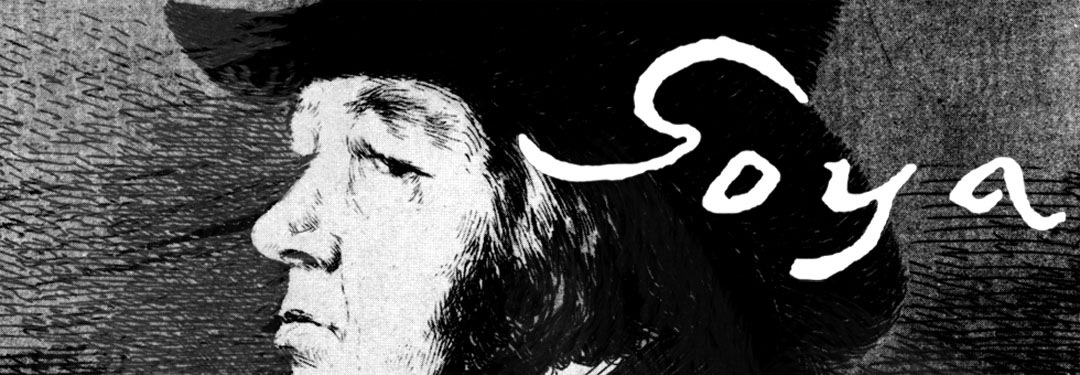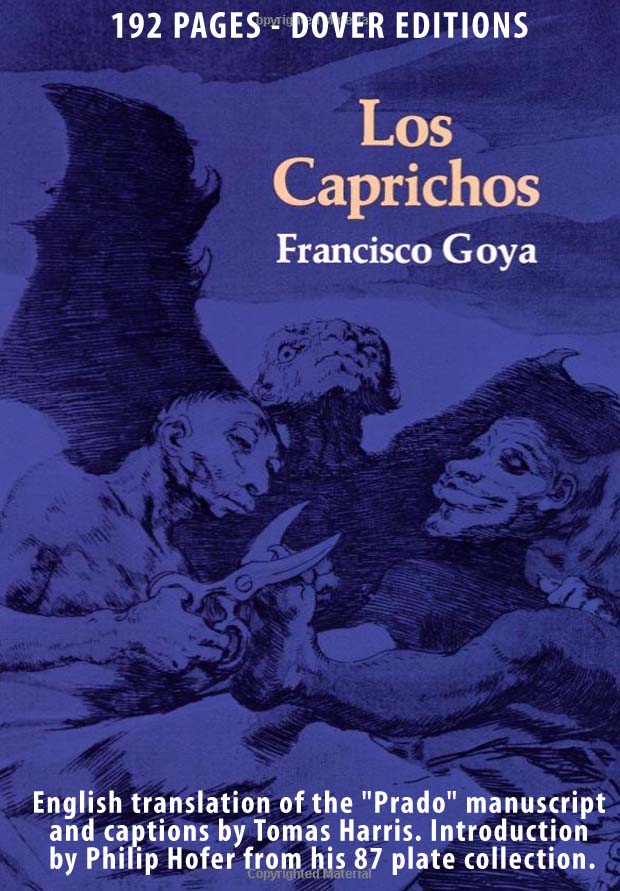Atropos

Atropos
The Black Paintings
Atropos
also called
The Fates
Las Parcas
1820-23 Oil on gesso transferred to linen
123 cm x 266 cm
Museo del Prado Madrid Spain
...Goya again includes a small number of clues that suggest a classical myth, only to contradict such a conventional interpretation. In this case we see hovering, floating figures, one of which is intent upon spinning, while another holds a pair of scissors aloft. The action of the central figure is indecipherable but might be interpreteed as measuring and winding the thread of life. The spinning and the cutting of thread are immediately reminiscent of traditional renditions of the Three Fates. But Goya destroys this easy interpretation by including a fourth figure that cannot be explained away. This figure prominently displays what might be either a lorgnon or a magnifying glass. It may well be that Goya began this painting, as well as the Saturn, with a fairly definite theme in mind, which was then altered and superceded by the obsessive and inexplicable intervention of a more personal and enigmatic symbolism that rose to the surface while the artist worked."
Fred Licht, from his book Goya, published by Abbeville Press 2001, page 221.
Goya's the "Black Paintings"
La Quinta de Goya – Goya's home in Spain and location where he made the Black Paintings
Writings about the Black Paintings
De Salas on the Black Paintings
AMAZON
Goya The Terrible Sublime - Graphic Novel - (Spanish Edition) - Amazon
"From this headlong seizure of life we should not expect a calm and refined art, nor a reflective one. Yet Goya was more than a Nietzschean egoist riding roughshod over the world to assert his supermanhood. He was receptive to all shades of feeling, and it was his extreme sensitivity as well as his muscular temerity that actuated his assaults on the outrageous society of Spain." From Thomas Craven's essay on Goya from MEN OF ART (1931).
"...Loneliness has its limits, for Goya was not a prophet but a painter. If he had not been a painter his attitude to life would have found expression only in preaching or suicide." From Andre Malroux's essay in SATURN: AN ESSAY ON GOYA (1957).
"Goya is always a great artist, often a frightening one...light and shade play upon atrocious horrors." From Charles Baudelaire's essay on Goya from CURIOSITES ESTRANGERS (1842).
"[An] extraordinary mingling of hatred and compassion, despair and sardonic humour, realism and fantasy." From the foreword by Aldous Huxley to THE COMPLETE ETCHINGS OF GOYA (1962).
"His analysis in paint, chalk and ink of mass disaster and human frailty pointed to someone obsessed with the chaos of existence..." From the book on Goya by Sarah Symmons (1998).
"I cannot forgive you for admiring Goya...I find nothing in the least pleasing about his paintings or his etchings..." From a letter to (spanish) Duchess Colonna from the French writer Prosper Merimee (1869).
GOYA : Los Caprichos - Dover Edition - Amazon






